
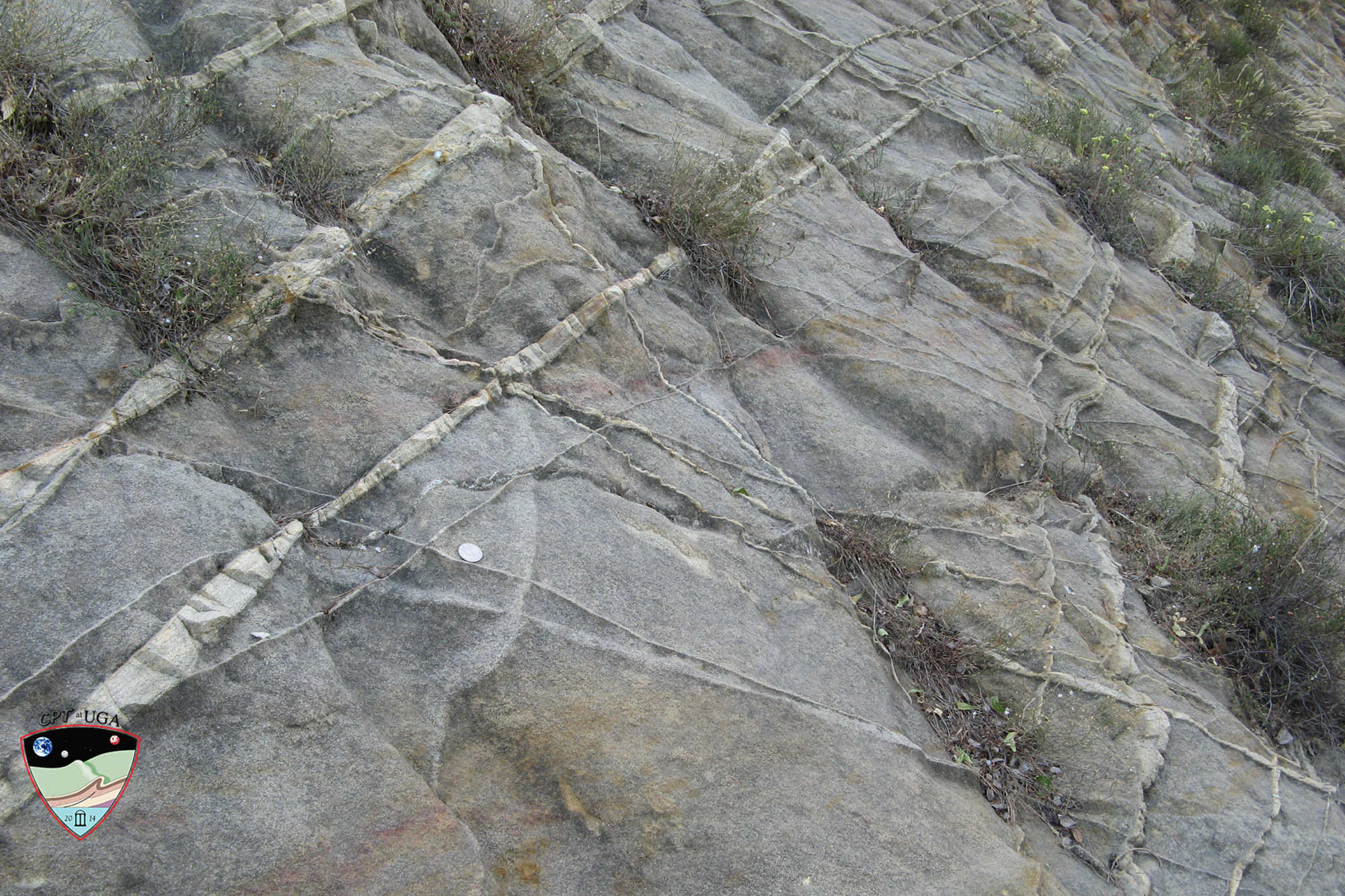
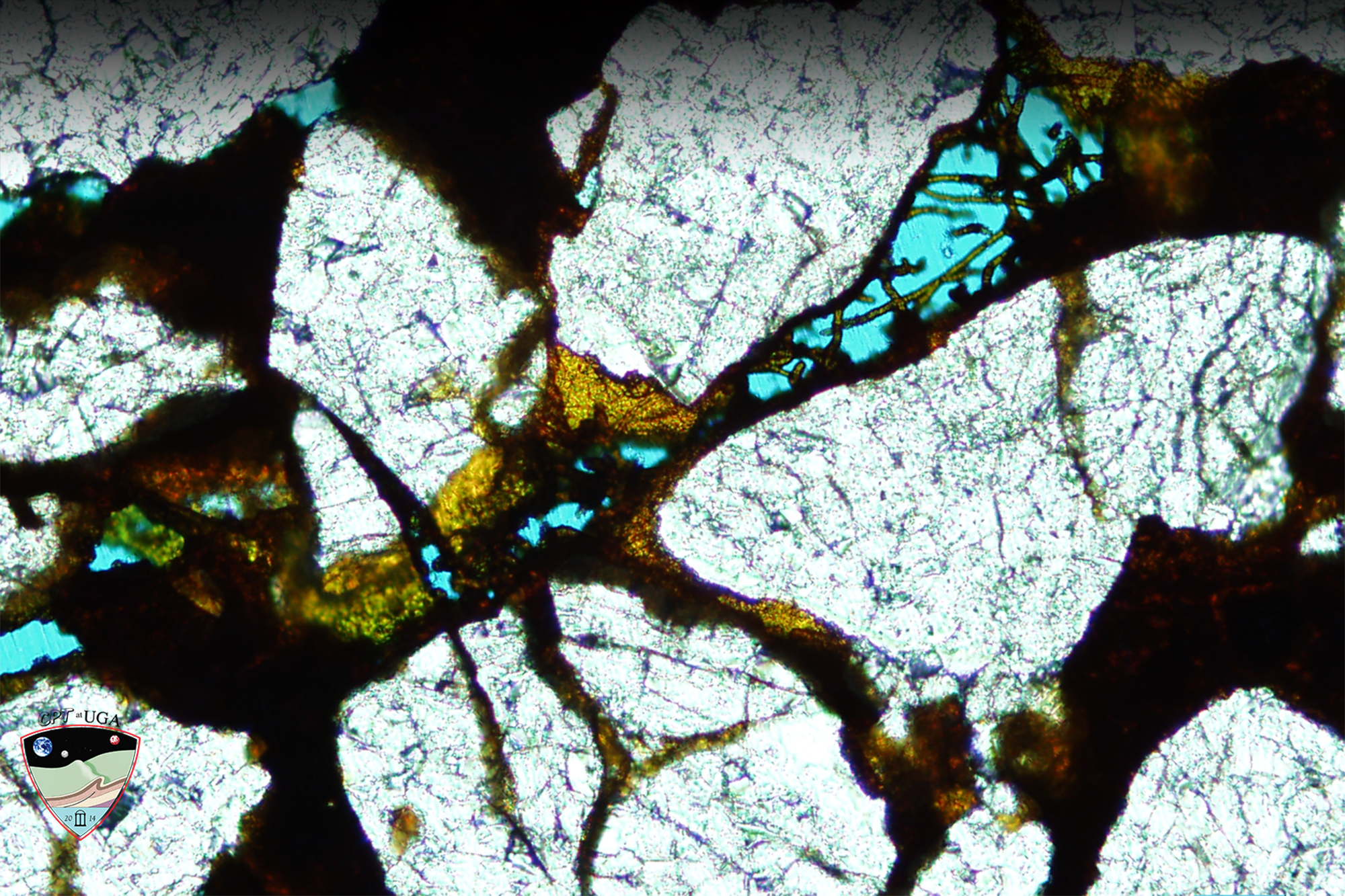
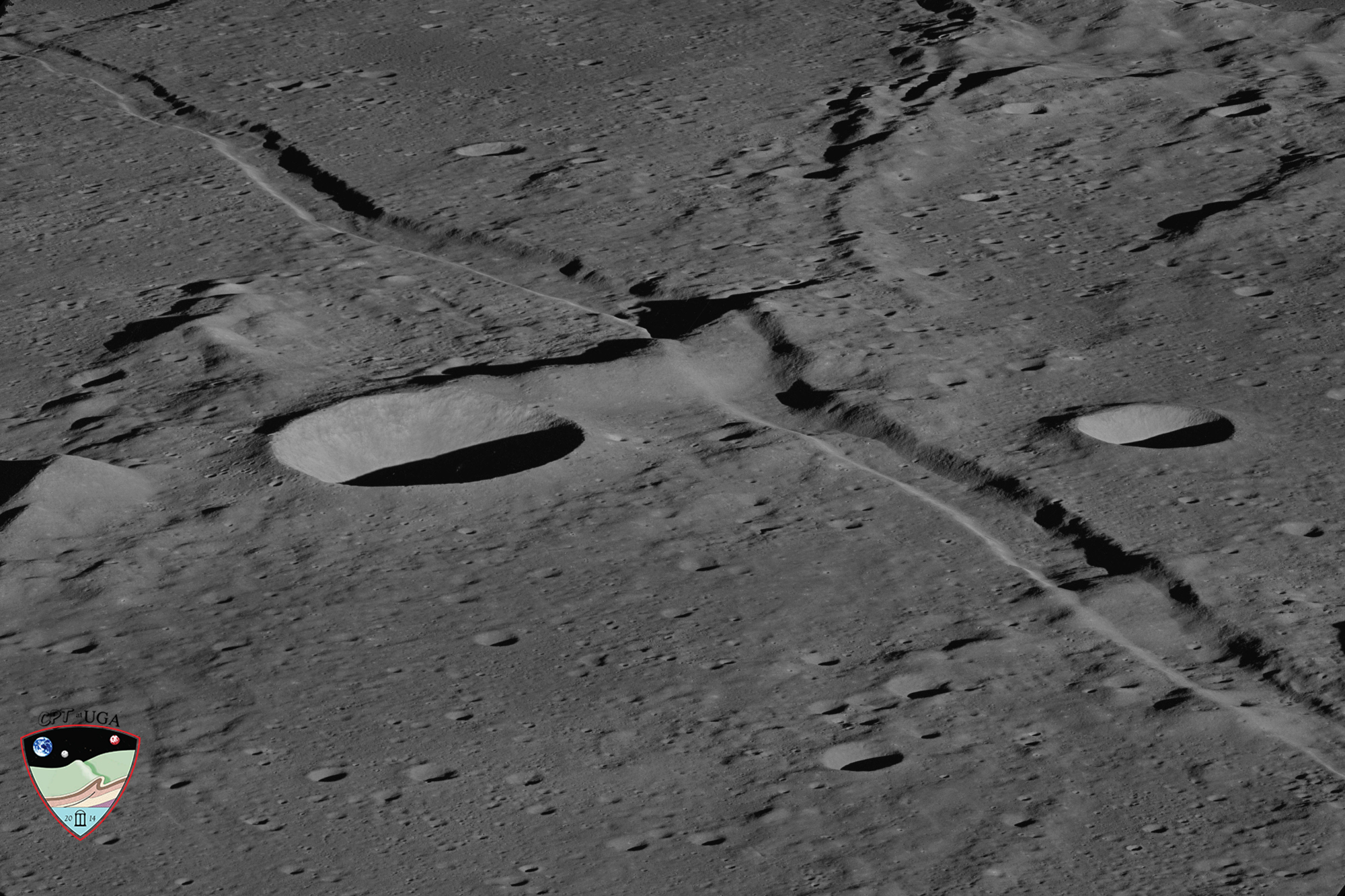
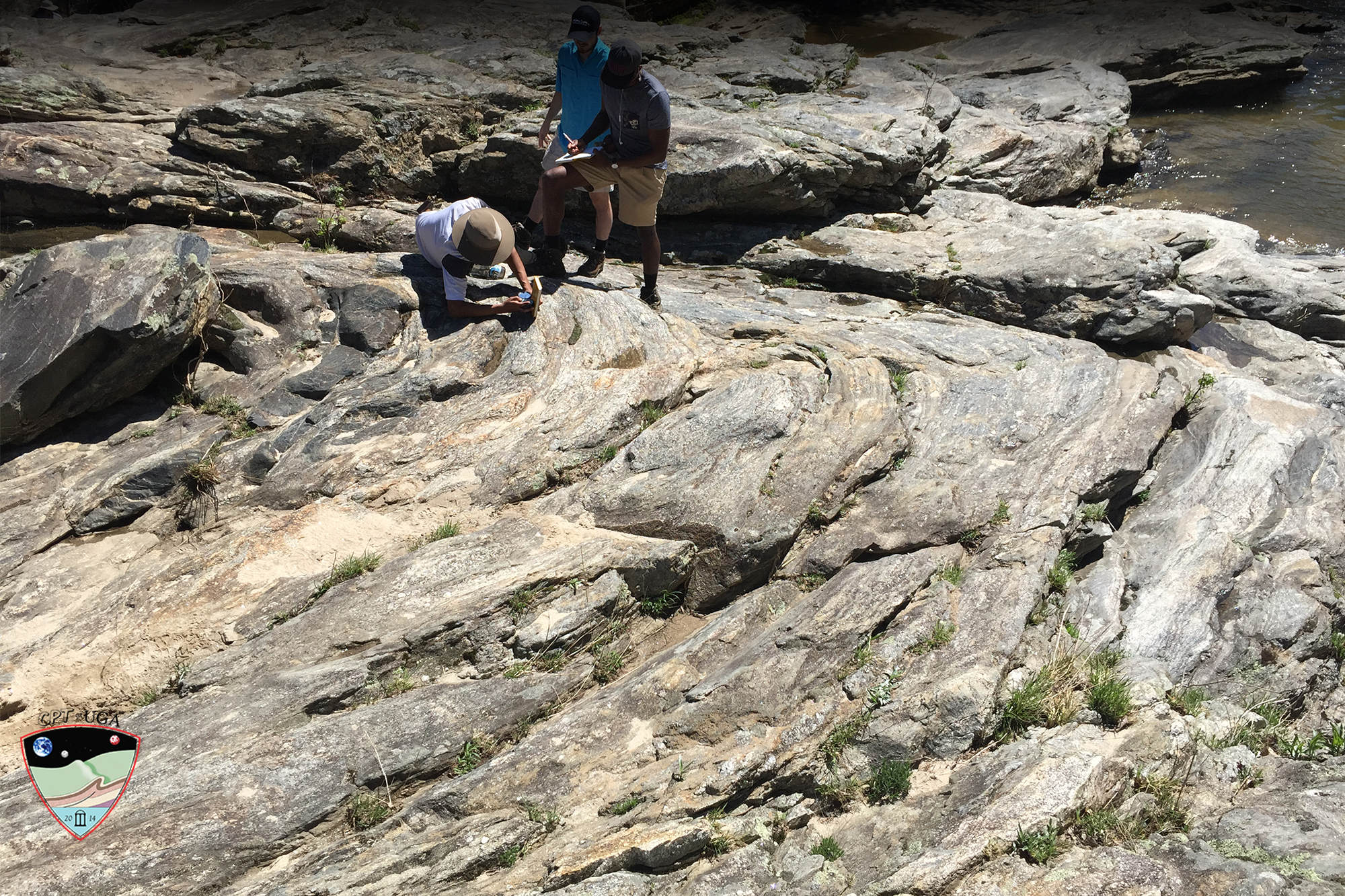


Welcome to CPT at UGA
The Center for Planetary Tectonics at the University of Georgia arose out of the Structural Geology and Geomechanics Group (formerly known as SGG). CPT at UGA is a wonderful place for conducting research, completing your graduate degree, and starting a career in the broad academic field of structural geology. The University of Georgia ⎯located in Athens, GA, a vibrant college town with affordable cost of living⎯ is constantly ranked among the top public research universities in the world. The Geology Department not only offers a wide variety of courses that complement your research in building your expertise but also frequently hosts visitors from academia and the Earth science-related industry that present networking opportunities for your future career. The Center for Planetary Tectonics itself consists of a laboratory with a multitude of state-of-the-art computational and technical equipment for analysis and visualization of geologic materials and data. Structural geology is a core discipline in the general field of geology, offers a great potential for interdisciplinary and innovative collaborations, and is valued in the mining- and petroleum-related industries, therefore making it an attractive field of study for future employment in the geosciences.
News
Fall 2025: CPT article is featured as a spotlight in EOS.
Fall 2025: Planetary Tectonism across the Solar System is published.

Summer 2023: IAU names Asteroid 32027 after Jupiter Cheng.
Spring 2023: Jupiter Cheng is recipient of 2023 Pellas-Ryder Award.
Summer 2021: SGG is now the Center for Planetary Tectonics at UGA.
Fall 2020: Jupiter Cheng receives 2020 Eugene M. Shoemaker Impact Cratering Award.
Summer 2020: SGG website relaunches on GitHub
Summer 2020: SGG involved in Planetary Structural Geology Community White Paper submitted to the Planetary Science and Astrobiology Decadal Survey 2023-2032.
Check out our YouTube channel. Watch, like, subscribe!
Dr. Klimczak speaks about planets on Turkish National TV (HaberTurk).
People
Christian Klimczak
Associate Professor, Director of CPT
CV
Expectations for CPT students

Current Students
Sydney Bledsoe
Graduate Student
Dissertation topic: TBD
Graduate Student, M.S. (2023)
M.S. thesis title: Investigating the topographic undulations along lava channels on Venus

Orion Buckley
Graduate Student
Research topic: The distribution of extensional landforms on Mars

Jack Ruse
Graduate Student
Research topic: The distribution of shortening landforms on Mars
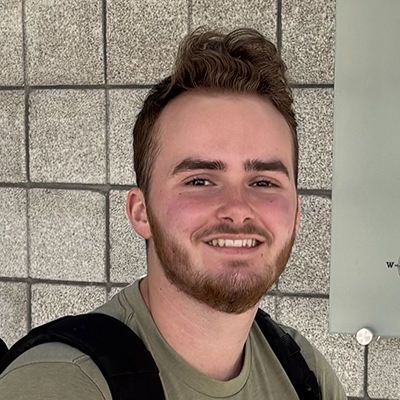
CPT (or SGG) Alumni
Stephan Loveless
Graduate Student, Ph.D. (2025)
Dissertation title: Investigations of Lithospheric Shortening on Mercury: Insights into Structure and Orientation of Thrust Faults and Application to Global Contraction
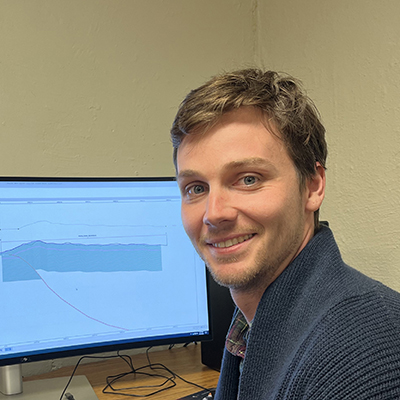
Michael Petersen
Undergraduate Student, B.S. (in progress)
Research topic: Fracture Networks on Enceladus
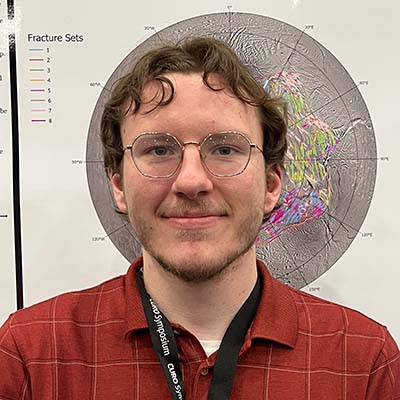
Javier Fajardo
Undergraduate Student, B.S. (2025)
Research topic: A tectonic map of the Orientale Basin on the Moon
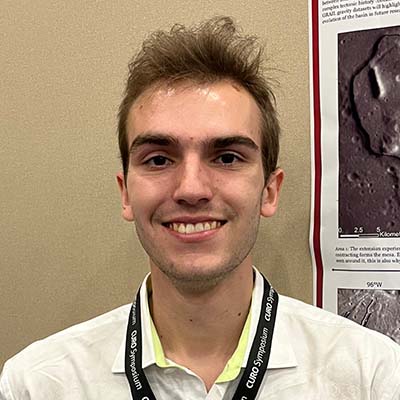
James Muilenburg
Undergraduate Student, B.S. (in progress)
Research topic: Topographic Expressions and Growth of Thrust Faults on Mercury

Madelyn Hurd
Undergraduate Student, B.S. (2024)
Research topic: The Three-Dimensional Fault Structure Underlying Carnegie Rupes, Mercury
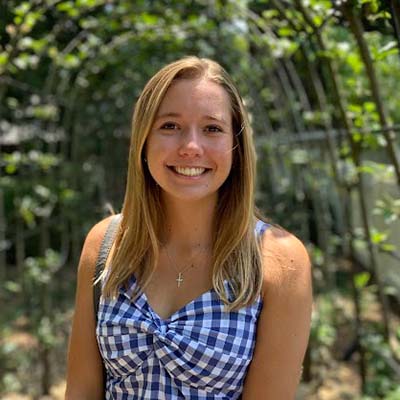
Abubakar Aliyu
Graduate Student, M.S. (2024)
M.S. title: Tectonostratigraphic complexity and fault damage zones in the Cañon City Embayment, Colorado
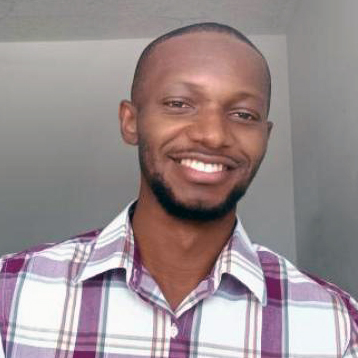
Hiu Ching Jupiter Cheng
Graduate Student, Ph.D. (2023)
Dissertation title: Origin and growth of fractures on low-gravity bodies: Insights from 4 Vesta, 1 Ceres, and Earth

Davis Hardin
Undergraduate Student, B.S. (2023)
Research topic: Crater saturation of Asteroid 4 Vesta
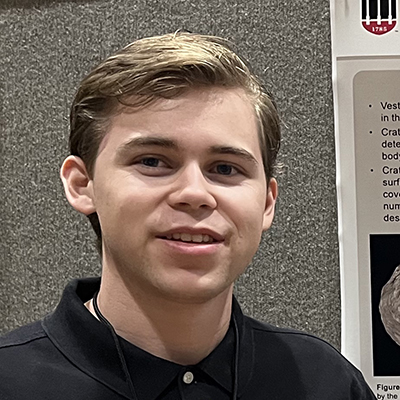
Işık Su Yazıcı
Graduate Student, M.S. (2021)
M.S. thesis title: Using planform impact crater shapes to investigate tectonic patterns of Mercury

Melanie Callihan
Graduate Student, Ph.D. (2020)
Dissertation title: Growth of complex fracture systems in extensional tectonic settings on Earth and the Moon with applications to tectonic geomorphology, fault rock evolution, and dike emplacement
Melanie's professional page

Cash Owens
Undergraduate Student, B.S. (2020)
Research topic: Geologic history and lava-fracture interaction at King’s Bowl, Craters of the Moon National Monument, Idaho
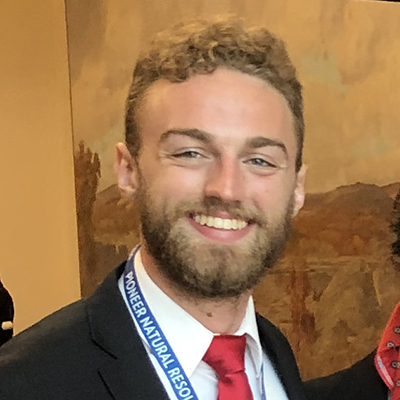
Sierra Ramsey
Graduate Student, M.S. (2020)
M.S. thesis title: The petrogenesis of Shergottites constrained by major and minor element variations in olivine
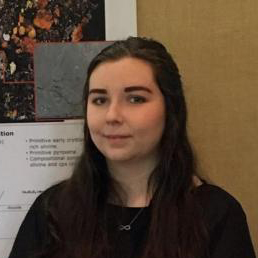
Kelsey Crane
Graduate Student, Ph.D. (2019)
Dissertation title: Thrust faulting on the terrestrial planets: Structural and tectonic studies of Mercury and the Columbia River Basalt Province
Kelsey's webpage
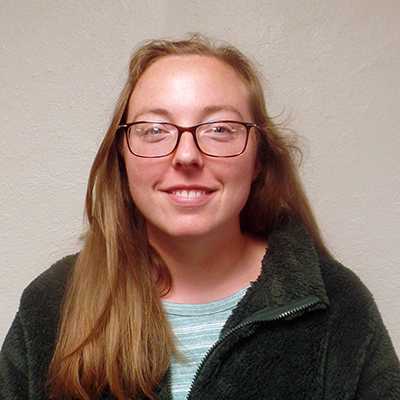
William Jenkins
Graduate Student, M.S. (2019)
M.S. thesis title: Investigating patterns and kinematics of faults and associated fumarolic activity atop a blind strike-slip system, Bishop Tuff, CA

Patrick Trent
Undergraduate Student, B.S. (2019)
Research topic: Petrographic analysis of altered units in the Bishop Tuff, Bishop, CA

Anthony Arbise
Undergraduate Student, B.S. (2018)
Research topic: Strike-slip faulting on Europa
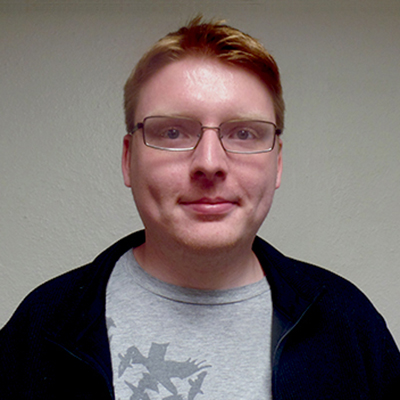
Quentin Anlian
Graduate Student, M.S. (2017)
M.S. thesis title: Deformation bands record oblique-slip faulting in the Cañon City Embayment, Colorado.
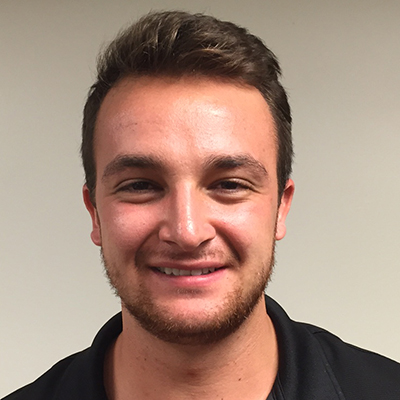
Corbin Kling
Graduate Student, M.S. (2016)
M.S. thesis title: Topographic expressions of large thrust faults on Mars
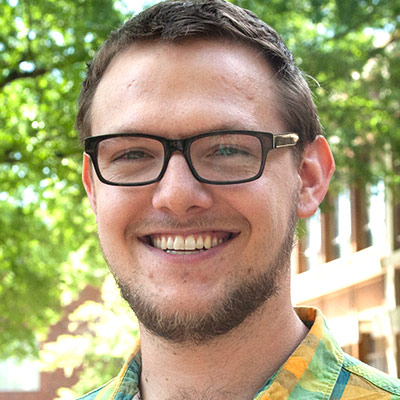
Mya Habermann
Undergraduate Student, B.S. (2015)
Senior thesis topic: Tectonic controls of pyroclastic volcanism on Mercury

Research
Graduate research in the Center for Planetary Tectonics focuses on microscopic analyses of deformed rock, mapping and analysis of the structural relationships on the outcrop- and local-scale, and on the characterization of regional-scale fault zone architecture and fault-fold relationships in many interesting regions on Earth and on the other terrestrial planetary bodies as well. Also of interest are global-scale problems on the interaction of volcanism and tectonics, such as volcanism in convergent tectonic regimes and the mechanics of large igneous dike intrusions. Rocks and their fracturing behaviors are analyzed in the field, in the lab, and from remotely sensed data, also making use of numerical, conceptual and experimental modeling. Please direct inquiries about graduate thesis projects to Dr. Klimczak.
Current projects
Planetary Tectonics

All facets of planetary tectonics excite us at CPT. We put emphasis on global or large-scale tectonic processes on the terrestrial planets that seek to characterize long-wavelength topographic phenomena of tectonic origin, study the geomorphology of fault-related landforms, utilize fault population characteristics to learn about the underlying processes that caused the faulting, and investigate the role of tectonics for volcanic and magmatic processes.
Fault zones

A big portion of the research conducted at CPT emphasizes on the characterization of the architecture, development, and evolution of faults and fault zones. Field sites include the East Kaibab monocline and the Paradox basin in Utah, the Bassin du Sud-Est in France, the Subhercynian Cretaceous Basin in Germany, and the Bohemian Cretaceous Basin in the Czech Republic. Fracture networks associated with the fault zones in these areas are remarkabe in terms of the deformation intensity, deformation mechanisms and fracture network geometries.
Structural diagenesis
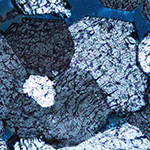
Our research on structural diagenesis concentrates on documenting and analyzing the effects of faulting on clastic sediments and poorly cemented clastic sedimentary rock from the outcrop down to microscopic scales. Of particular interest are deformation micro-mechanisms that lead to the diagenesis. We are currently studying cataclasis, tectonically induced quartz cementation, and micro-stylolitization.
Opening-mode fracturing
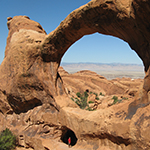
Opening-mode fractures, such as joints, veins, and dikes are ubiquitous in the upper portion of the Earth’s lithosphere and so they play an important role as conduits for a wide variety of fluids (ground water, hydrothermal fluids, magma, petroleum, etc.). Furthermore, opening-mode fractures affect the bulk deformation properties of a rock mass (outcrops and larger scales) and so a detailed characterization of their localization, orientation, and distribution is essential for studying lithospheric deformation.
Publications
2026
59. Byrne, P. K., Padovan, S., Matsuyama, I., and Klimczak, C.: Tectonics driven by changes in planetary shape. In: Klimczak, C., Collins, G., and Byrne, P. K.: Comparative Tectonism across the Solar System. Chapter 7, 285–323, 2026. doi:10.1016/B978-0-12-816092-3.00015-9. 58. Collins, G., Klimczak, C., and Byrne, P. K.: Introduction to the volume. In: Klimczak, C., Collins, G., and Byrne, P. K.: Comparative Tectonism across the Solar System. Chapter 1, 1–15, 2026. doi:10.1016/B978-0-12-816092-3.00001-9. 57. Klimczak C., and McCarthy, C.: Planetary geomechanics. In: Klimczak, C., Collins, G., and Byrne, P. K.: Comparative Tectonism across the Solar System. Chapter 3, 63–132, 2026. doi:10.1016/B978-0-12-816092-3.00003-2. 56. Klimczak C., Collins, G., and Byrne, P. K.: Outlook. In: Klimczak, C., Collins, G., and Byrne, P. K.: Comparative Tectonism across the Solar System. Chapter 8, 325–329, 2026. doi:10.1016/B978-0-12-816092-3.00008-1. 55. Bledsoe, S. A., and Klimczak, C.: Global distribution of canali on Venus. Journal of Maps 21(1), 2465669, 2025. doi:10.1080/17445647.2025.2465669. 54. Cheng, H. C. J., and Klimczak, C.: Tectonic patterns on Vesta and Ceres revealed by polygonal impact craters. Icarus 433, 2465669, 2025. doi:10.1016/j.icarus.2025.116528. 53. Cheng, H. C. J., Klimczak, C., and Matsuyama, I.: Reorientation and despinning of 4 Vesta formed the Divalia Fossae. Science Advances 11, eads7984, 2025. doi:10.1126/sciadv.ads7984. 52. Cheng, H. C. J., Mrazek, J., and Klimczak, C.: The transition from jointing to faulting observed at the Koa’e Fault Zone, Hawai’i Volcanoes National Park, Hawaii. Journal of Geophysical Research, Solid Earth 130, e2024JB030416, 2025. doi:10.1029/2024JB030416. 51. Klimczak, C., Crane K. T., and Byrne, P. K.: Mercury has multiple, superposed global tectonic patterns. Earth and Planetary Science Letters 658, 1199331, 2025. doi:10.1016/j.epsl.2025.119331. 50. Loveless, S. R.., and Klimczak, C.: Several kilometers of global contraction on Mercury: A sample-size independent assessment of fault strain. AGU Advances 6, e2025AV001715, 2025. doi:10.1029/2025AV001715. 49. Loveless, S. R., 48. Beddingfield, C. B., Crane, K., Klimczak, C., and Cartwright, R.: Mercury’s Lobate Scarps Reveal that Polygonal Impact Craters Form on Contractional Structures. The Planetary Science Journal 5:52, 32pp, 2024. doi:10.3847/PSJ/ad1fff. 47. Loveless, S. R., Klimczak, C., McCullough, L. R., Crane K. T., Holland, S. M., and Byrne, P. K.: A statistical evaluation of the morphological variability of shortening landforms on Mercury. Icarus 416, 116106, 2024. doi:10.1016/j.icarus.2024.116106. 46. McCullough, L. R., 45. Yazıcı, I. S., Cheng, H. C. J., Crane K. T., and Klimczak, C.: Straight impact crater rim segments on Mercury. Journal of Maps 20(1), 2308687, 2024. doi:10.1080/17445647.2024.2308687. 44. Collins, M. S., Byrne, P. K., Klimczak, C., and Mazarico, E.: Thrust Faults Bound an Elevated Mantle Plug Beneath Several Lunar Basins. Journal of Geophysical Research, Planets 128, e2022JE007682, 2023. doi:10.1029/2022JE007682. 43. Cheng, H. C. J., and Klimczak, C.: Structural relationships in and around the Rheasilvia basin on Vesta. Journal of Structural Geology, 161, 104677, 2022. doi:10.1016/j.jsg.2022.104677. 42. Cheng, H. C. J., and Klimczak, C.: Large-scale troughs on Asteroid 4 Vesta accommodate opening-mode displacement. Journal of Geophysical Research, Planets 127, e2021JE007130, 2022. doi:10.1029/2021JE007130. 41. Byrne, P. K., Ghail, R. C., Şengör A. M. C., James, P. B., Klimczak, C., and Solomon, S. C.: A Globally Fragmented and Mobile Lithosphere on Venus. Proceedings of the National Academy of Sciences of the United States of America 118, e2025919118, 2021. doi:10.1073/pnas.2025919118 40. Byrne, P. K., Ghail, R. C., Gilmore, M. S., Şengör A. M. C., Klimczak, C., Senske, D. A., Whitten, J. L., Khawja, S., Ernst, R. E., and Solomon, S. C.: Venus tesserae feature layered, folded, and eroded rocks. Geology 46, 81–85, 2021. doi:10.1130/G47940.1. 39. Cheng, H. C. J., Klimczak, C., and Fassett, C. I.: Age relationships of large-scale troughs and impact basins on Vesta. Icarus 366, 114512, 2021. doi:10.1016/j.icarus.2021.114512. 38. Jenkins, W. T., Klimczak, C., Trent, P. M., and Crowe, D. E.: Fumarolic Pathways were Structurally Controlled by a Strike-Slip Fault System Beneath the Bishop Tuff, Bishop, California. Minerals 11, 1167, 2021. doi:10.3390/min11111167. 37. Callihan, M. B., and Klimczak, C.: Topographic Expressions of Lunar Graben. Lithosphere 11, 294–305, 2019. doi:10.1130/L1025.1. 36. Crane, K. T., and Klimczak, C.: A 3-D structural model of the Saddle Mountains, Yakima Fold Province, Washington, USA: Implications for Late Tertiary tectonic evolution of the Columbia River Flood Basalt Province. Tectonophysics 766, 1–13, 2019. doi:10.1016/j.tecto.2019.05.015. 35. Crane, K. T., and Klimczak, C.: Tectonic Patterns of Shortening Landforms in Mercury’s Northern Smooth Plains. Icarus 317, 66–80, 2019. doi:10.1016/j.icarus.2018.05.034. 34. Klimczak, C., Byrne, P. K., Şengör, A. M. C., and Solomon, S. C.: Principles of structural geology on rocky planets. Canadian Journal of Earth Sciences 56, 1437–1457, 2019. doi:10.1139/cjes-2019-0065. 33. Byrne, P. K., Klimczak, C., and Şengör, A. M. C.: The Tectonic Character of Mercury. In: Solomon, S. C., Nittler, L. R., and Anderson, B. J.: Mercury: The View after MESSENGER (Chapter 10), 249–286, 2018, Cambridge Planetary Science.
32. Byrne, P. K., Whitten, J. L., Klimczak, C., McCubbin, F. M., and Ostrach, L. R.: The Volcanic Character of Mercury. In: Solomon, S. C., Nittler, L. R., and Anderson, B. J.: Mercury: The View after MESSENGER (Chapter 11), 287–323, 2018, Cambridge Planetary Science.
31. Klimczak, C., Kling, C. L., and Byrne, P. K.: Topographic Expressions of Large Thrust Faults on Mars. Journal of Geophysical Research (Planets) 123, 1973–1995, 2018. doi:10.1029/2017JE005448. 30. Klimczak, C., Crane, K. T., Habermann, M. A., and Byrne, P. K.: The spatial distribution of Mercury’s pyroclastic activity and the relation to lithospheric weaknesses. Icarus 315, 115–123, 2018. doi:10.1016/j.icarus.2018.06.020. 29. Crane, K. T., and Klimczak, C.: Timing and Rate of Global Contraction on Mercury. Geophysical Research Letters 44, 3082–3089, 2017. doi:10.1002/2017GL072711. 28. Byrne, P. K., Ostrach, L. R., Fassett, C. I., Chapman, C. R., Denevi, B. W., Evans, A. J., Klimczak, C., Banks, M. E., Head, J. W., and Solomon, S. C.: Widespread effusive volcanism on Mercury likely ended by about 3.5 Ga. Geophysical Research Letters 43, 7408–7416, 2016. doi:10.1002/2016GL069412. 27. Weider, S. Z., Nittler, L. R., Murchie, S. L., Peplowski, P. N., McCoy, T. J., Kerber, L., Klimczak, C., Ernst, C. M., Goudge, T. A., Starr, R. D., Izenberg, N. R., Klima, R. L., Solomon, S. C.: Evidence from MESSENGER for sulfur- and carbon-driven explosive volcanism on Mercury. Geophysical Research Letters 43, 3653–3661, 2016. doi:10.1002/2016GL068325. 26. Banks, M. E., Xiao, Z., Watters, T. R., Strom, R. G., Braden, S. E., Chapman, C. R., Solomon, S. C., Klimczak, C., Byrne, P.K.: Duration of Activity on Lobate-Scarp Thrust Faults on Mercury. Journal of Geophysical Research (Planets) 120, 1751–1762, 2015. doi:10.1002/2015JE004828. 25. Byrne, P. K., Klimczak, C., McGovern, P. J., Mazarico, E., James, P. B., Neumann, G. A., Zuber, M. T., Solomon, S. C.: Deep-seated reverse faults bound the Mare Crisium lunar mascon. Earth and Planetary Science Letters 427, 183–190, 2015. doi:10.1016/j.epsl.2015.06.022. 24. Ernst, C. M., Denevi, B. W., Barnouin, O. S., Klimczak, C., Chabot, N. L., Head, J. W., Murchie, S. L., Neumann, G. A., Prockter, L. M., Robinson, M. S., Solomon, S. C., Watters, T. R.: Volcanic Plains in Caloris Basin: Thickness, Timing, and What Lies Beneath. Icarus 250, 413–429, 2015. doi:10.1016/j.icarus.2014.11.003. 23. Ferrari, S., Massironi, M., Marchi, S., Byrne, P. K., Klimczak, C., Martellato, E., Cremonese, G.: Age relations of the Rembrandt basin and associated scarp system, Mercury. In: Platz, T., Massironi, M., Byrne, P. K. & Hiesinger, H. (eds) Volcanism and Tectonism Across the Inner Solar System. Geological Society, London, Special Publications 401, 159–172, 2015. doi:10.1144/SP401.20. 22. Klimczak, C., Byrne, P. K., Solomon, S. C.: A rock-mechanical assessment of Mercury's global tectonic fabric. Earth and Planetary Science Letters 416, 82–90, 2015. doi:10.1016/j.epsl.2015.02.003. 21. Klimczak, C.: Brittle strength of planetary lithospheres undergoing global contraction. Journal of Geophysical Research (Planets) 120, 2135–2151, 2015. doi:10.1002/2015JE004851. 20. Byrne, P. K., Klimczak, C., Şengör, A. M. C., Solomon, S. C., Watters, T. R., Hauck II, S. A.: Mercury’s global contraction much greater than earlier estimates. Nature Geoscience 7, 301–307, 2014. doi:10.1038/NGEO2097. 19. Klimczak, C.: Geomorphology of Lunar Grabens Requires Igneous Dikes at Depth. Geology 42,963–966, 2014. doi:10.1130/G35984.1. 18. Xiao, Z., Strom, R. G., Chapman, C. R., Head, J. W., Klimczak, C., Ostrach, L. R., Helbert, J., D'Incecco, P.: Controlling factors in impact excavation processes: Insights from comparisons of fresh complex impact craters on Mercury and the Moon. Icarus 228, 260–275, 2014. doi:10.1016/j.icarus.2013.10.002. 17. Blair, D. M., Freed, A. M., Watters, T. R., Byrne, P. K., Klimczak, C., Prockter, L. M., Ernst, C. M., Solomon, S. C., Melosh, H. J., and Zuber, M. T.: The origin of graben and ridges in Rachmaninoff, Raditladi, and Mozart basins, Mercury. Journal of Geophysical Research (Planets) 118, 47–58, 2013. doi: 10.1029/2012JE004198. 16. Byrne, P. K., Klimczak, C., Williams D. A., Hurwitz, D. M., Solomon, S. C., Head, J. W., Preusker, F., and Oberst, J.: An Assemblage of Lava Flow Features on Mercury. Journal of Geophysical Research (Planets) 118, 1303–1322, 2013. doi:10.1002/jgre.20052. 15. Denevi, B. W., Ernst, C. M., Meyer, H. M., Robinson, M. S., Murchie, S. L., Whitten, J. L., Head, J. W., Watters, T. R., Solomon, S. C., Ostrach, L. R., Chapman, C. R., Byrne, P. K., Klimczak, C., Peplowski, P. N.: The Distribution and Origin of Smooth Plains on Mercury. Journal of Geophysical Research (Planets) 118, 891–907, 2013. doi:10.1002/jgre.20075. 14. Klimczak, C., Ernst, C. M., Byrne, P. K., Solomon, S. C., Watters, T. R., Murchie, S. L., Preusker, F., Balcerski, J. A.: Insights into the subsurface structure of the Caloris basin, Mercury, from assessments of mechanical layering and changes in long-wavelength topography. Journal of Geophysical Research (Planets) 118, 2030–2044, 2013. doi:10.1002/jgre.20157. 13. Klimczak, C., and Schultz, R. A.: Shear-enhanced compaction in dilating granular materials. International Journal of Rock Mechanics and Mining Sciences 64, 139–147, 2013. doi:10.1016/j.ijrmms.2013.08.012. 12. Klimczak, C., and Schultz, R. A.: Fault damage zone origin of the Teufelsmauer, Subhercynian Cretaceous Basin, Germany. International Journal of Earth Sciences/Geologische Rundschau, 102, 121–138, 2013. doi: 10.1007/s00531-012-0794-z. 11. Schultz, R. A., Klimczak, C., Fossen, H., Olson, J. E., Exner, U., Reeves, D. M., and Soliva, R.: Statistical tests of scaling relationships for geologic structures. Journal of Structural Geology 48, 85–94, 2013. doi: 10.1016/j.jsg.2012.12.005. 10. Fassett, C. I., Head, J. W., Baker, D. M., Zuber, M. T., Smith, D. E., Neumann, G. A., Solomon, S. C., Klimczak, C., Strom, R. G., Chapman, C. R., Prockter, L. M., Phillips, R. J., Oberst J., and Preusker, F.: Large impact basins on Mercury: Global distribution, characteristics, and modification history from MESSENGER orbital data. Journal of Geophysical Research (Planets) 117, E00L08, 2012. doi: 10.1029/2012JE004154. 9. Freed, A. M., Blair, D. M., Watters, T. R., Klimczak, C., Byrne, P. K., Solomon, S. C., Zuber, M. T., and Melosh, H. J.: On the Origin of Graben and Ridges within and near Volcanically Buried Craters and Basins in Mercury’s Northern Plains. Journal of Geophysical Research (Planets) 117, E00L06, 2012. doi: 10.1029/2012JE004119. 8. Klimczak, C., Watters, T. R., Ernst, C. M., Freed, A. M., Byrne, P. K., Solomon S. C., Blair, D. M., and Head, J. W.: Deformation associated with ghost craters and basins in volcanic smooth plains on Mercury: Strain analysis and implications for plains evolution. Journal of Geophysical Research (Planets) 117, E00L03, 2012. doi: 10.1029/2012JE004100. 7. Watters, T. R., Solomon S. C., Klimczak, C., Freed, A. M., Head, J. W., Ernst, C. M., Blair, D. M., Goudge, T. A., and Byrne, P. K.: Extension and Contraction within Volcanically Buried Impact Craters and Basins on Mercury. Geology 40, 1123-1126, 2012. doi: 10.1130/G33725.1. 6. Zuber, M. T., Smith, D. E., Phillips, R. J., Solomon, S. C., Neumann, G. A., Hauck II, S. A., Peale, S. J., Barnouin, O. S., Head, J. W., Johnson, C. L., Lemoine, F. G., Mazarico, E., Sun, X., Torrence, M. H., Freed, A. M., Klimczak, C., Margot, J.-L., Oberst, J., Perry, M. E., McNutt, R. L., Jr., Balcerski, J. A., Michel, N., Talpe, M. J., and Yang, D.: Topography of the Northern Hemisphere of Mercury from MESSENGER Laser Altimetry. Science 336, 217-220, 2012. doi: 10.1126/science.1218805. 5. Head, J. W., Chapman, C. R., Strom, R. G., Fassett, C. I., Denevi, B. W., Blewett, D. T., Ernst, C. M., Watters, T. R., Solomon, S. C., Murchie, S. L., Prockter, L. M., Chabot, N. L., Gillis-Davis, J. J., Whitten, J., Goudge, T. A., Baker, D. M., Hurwitz, D. M., Ostrach, L. R., Xiao, Z., Merline, W. J., Kerber, L. A., Dickson, J. L., Oberst, J., Byrne, P. K., Klimczak, C., and Nittler, L. R.: Flood Volcanism in the Northern High Latitudes of Mercury Revealed by MESSENGER. Science 333, 1853-1856, 2011. doi: 10.1126/science.1211997. 4. Klimczak, C., Soliva, R., Schultz, R. A., and Chery, J.: Sequential growth of deformation bands in a multilayer sequence. Journal of Geophysical Research (Solid Earth) 116, B09209, 2011. doi: 10.1029/2011JB008365. 3. Klimczak, C., Schultz R. A., Parashar, R., and Reeves, D. M.: Cubic Law with correlated aperture to length and implications for network scale fluid flow. Hydrogeology Journal 18, 851-862, 2010. doi: 10.1007/s10040-009-0572-6. 2. Klimczak, C., Schultz, R. A., and Nahm, A. L.: Evaluation of the origin hypotheses of Pantheon Fossae, central Caloris basin, Mercury. Icarus 209, 262-270, 2010. doi: 10.1016/j.icarus.2010.04.014. 1. Klimczak, C., Wittek, A., Doman, D., and Riller, U.: Fold origin of the NE-lobe of the Sudbury Basin, Canada: Evidence from heterogeneous fabric development in the Onaping Formation and the Sudbury Igneous Complex. Journal of Structural Geology 29, 1744 – 1756, 2007. doi: 10.1016/j.jsg.2007.09.003.2025
2024
2023
2022
2021
2019
2018
2017
2016
2015
2014
2013
2012
2011
2010
2007
For a complete list of abstracts click here
For a complete list of invited lectures click here
Courses
GEOL4060/6060 Structural Geology
Structural geology is a core discipline in the study of geological sciences. GEOL 4060/6060 Structural Geology introduces students to the fundamental concepts of structural geology, including the representation and analysis of three-dimensional geologic data, stress and strain, microscopic to outcrop-scale rock fabrics, and large-scale tectonic processes. The course provides students with the framework to understand and integrate these fundamental concepts in all aspects of the geological sciences. The class schedule and other relevant course materials will be available at UGA's eLearningCommons website. Videos relevant to the content of this course can be watched at our YouTube channel.
Taught: Spring 2015-25; To be taught: Spring 2026
GEOL 1121 Earth Processes and Environments
GEOL 1121 Earth Processes and Environments is a basic introduction to geology and its role toward understanding the processes that shape and change planet Earth. The course familiarizes students with the scientific method and how it is applied to learn about the origin and evolution of our planet and the impact of Earth processes and changing environments on human civilization. The class schedule and other relevant course materials will be available on UGA's eLearningCommons website.
Taught: Fall 2015-20; Fall 22, 24; To be taught: Fall 2026
GEOL 4360/6360 Introduction to Rock Mechanics
GEOL 4360/6360 is aimed as an introduction to the brittle field of rock deformation, the rock mass concept, and its role for site characterization and engineering design. The course will convey an understanding of rock as a material, the relationship between stress and strain, and deformation and failure of rock to classify rock fracture types and rock fracturing behavior. The class schedule and other relevant course materials will be available on UGA's eLearningCommons website. Videos relevant to the content of this course can be watched at our YouTube channel.
Taught: Spring 16, Fall 17, 19, 21; To be taught: Fall 2025
GEOL 4270/6270 Geology Field School
GEOL 4270/6270 introduces students to field mapping, recording of field measurements, recognition and documentation of large-scale structures, and construction of geologic cross sections from previously collected field data.
Taught: Summer 2017-19, 2021-24; To be taught: Summer 2025
GEOL 3000 Alien Worlds in our Backyard
GEOL 3000 is an introduction to the geologic processes on Earth, exploration of our Solar System, and geologic discoveries on all major bodies in our Solar System. The course uses comparative planetology as a tool to learn about the geology of extraterrestrial worlds, including inner and outer Solar System bodies, asteroids, and objects from the outermost reaches of our Solar System.
Taught: Fall 2021; To be taught: Fall 2025
Facilities
The CPT lab space has a variety of equipment for scientific work to be carried out in the field and/or laboratory. A subset of our instruments and devices are listed below.
Computational Equipment and Software

CPT is equipped with several workstations and ruggedized field computers running on Linux/Unix, MacOS, and/or Windows. Software for mapping and data analysis include MATLAB, ArcGIS, Surfer, ISIS, MOVE, Pix4D, etc.
Schmidt Hammers

CPT has an L-type as well as an N-type Schmidt rebound hammer for measuring surface hardness and penetration resistance of rock to infer in-situ rock elastic properties or rock strength. These handy instruments are useful for studying deformation properties of sedimentary- (L-type) or igneous rock (N-type) in the field.
TinyPerm
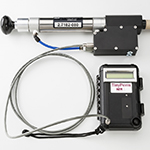
CPT's TinyPerm is a portable hand-held air permeameter used for measurement of rock matrix permeability or effective fracture apertures on outcrops and at the core scale. This instrument is designed to be used either in the field or laboratory to take measurements on rocks or other porous materials.
Sampling Equipment

At CPT we have a multitude of rock sampling gear including rock and sledge hammers, chisels, and a portable rock drill capable of taking oriented samples.
Microscopy

CPT hosts a state-of-the-art Zeiss polarizing microscope (axioscope) for thin section analysis. Thin section analysis can be enhanced using our Mk5 optical cathodoluminescence stage.
Image Acquisition
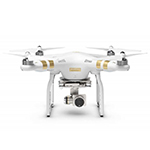
Landscapes and landforms can be studied with unmanned aerial vehicles (UAVs). At CPT we have a DJI Phantom 3 UAV and camera system for aerial photography and digital elevation modeling.
Contact
Center for Planetary Tectonics
Department of Geology
University of Georgia
210 Field Street
Athens, GA 30602
please call or email
email: klimczak at uga.edu
phone office: 706-542-2977
phone lab: n/a
